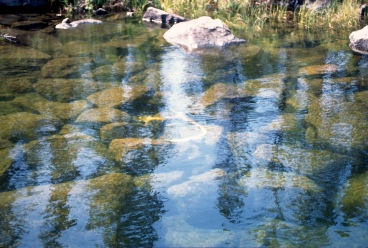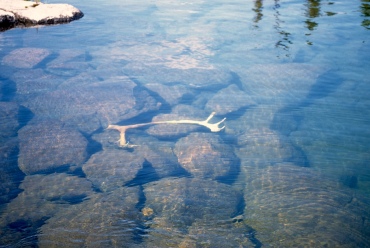Keeping Hands Close
December 28, 2012 Leave a comment
By TFO
When making Skagit style casts, it can be easy to allow your hands to drift away from your body.
But, to make the most effective casts, it is imperative to keep the hands close to the body.
Keeping your hands close applies mainly to anglers using short heads (18 to 27 feet), on 11 to-14-foot rods.
Longer rods and long belly lines will require longer strokes in order to achieve the D-loop.
This idea of keeping everything close relates back to simple physics.
A mass held closely to the center of its rotation requires less force to control.
When arms become extended it will take more power to generate and control the rod and line during the cast. Also, the power generated by hip movement will not be lost. It will also help load the butt section of the rod, generating more power with less effort.

Nick Curcione demonstrates how keeping the rod close to the body on Skagit casts can generate more power with less effort. ©Brandon Powers, Temple Fork Outfitters.
By keeping everything close, it will force the caster to be reliant upon the bottom hand–the hand that is the force behind powerful casts. By pulling hard on the bottom hand, the force exerted on the lever (the rod) will be in the proper place. Often anglers will try to “push” or “punch” the top hand, pushing force higher onto the lever, which causes a loss in power and distance.
This can also alleviate the stress which is put upon the shoulders of a caster.
Imagine holding a heavy weight, with arms extended directly out in front of you. Now bring that weight in close to your body. Isn’t that significantly easier to control now? Over time it will pay off and the wear and tear on shoulders will be much less.






